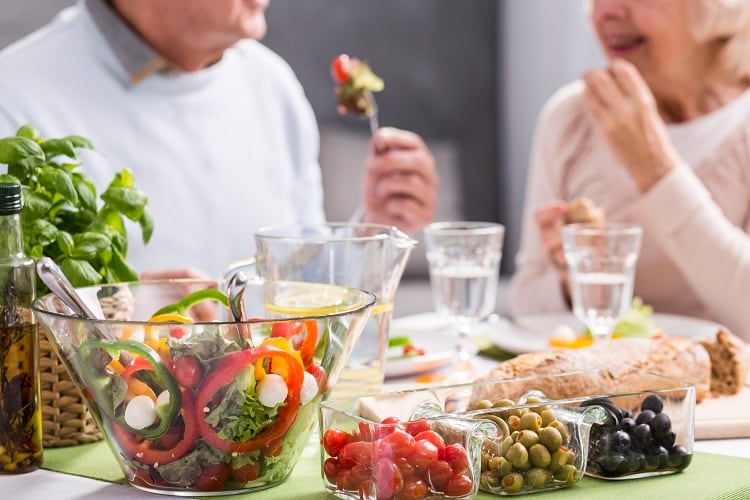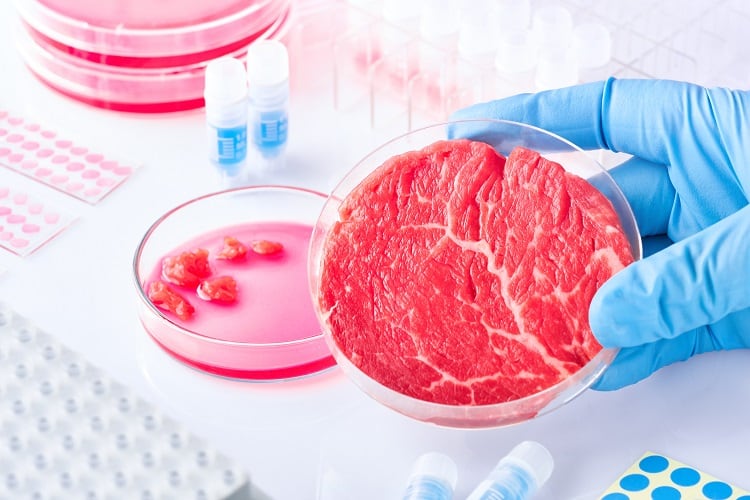Older population numbers are on the rise in most European countries, largely due to a decrease in fertility, a decline in mortality rate, and a higher life expectancy.
Ageing leads to changes in physiological and contextual conditions that influence food intake as well as enjoyment in food.
To meet these demographic challenges, says Ida Synnøve Bårvåg Grini, senior advisor at the Norwegian Institute of Food, Fisheries and Aquaculture Research (Nofima), ageing populations must remain healthy and active for as long as possible. In doing so, they stand more chance of living independently without help from public healthcare systems.
“There has been a lot of research done on older people living in nursing homes, but little research has been done on elderly adults living at home,” the senior advisor told FoodNavigator.
Together with Nofima colleagues Astrid Nilsson and Antje Gonera, Grini sought to understand the needs, concerns, and opportunities for ageing populations on a deeper level.
In their recently published report, ‘Food in 2030 for the elderly living at home: A user-centred approach to creating opportunities’, the researchers have predicted what they believe will be on ageing peoples’ plates, where and how they will eat their meals, and what role sustainability will play in these choices, in 2030.
A method founded on empathy
Grini, Nilsson and Genera used the principles and toolbox from design thinking (DT) to undertake their research. The method is a ‘people-

oriented’ way of working, Grini explained, which involves techniques that determine how to achieve user empathy. This was ‘very important’ to the study, she elaborated.
“To highlight the opportunity to involve the elderly for a more realistic estimation of future needs and reduction of projection bias we composed three focus groups with participants of different ages,” we were told. These age groups were 55-66, 67-84, and 22-29 years.
“After that we did four innovation assemblies with the same age as in the focus group where we presented and discussed the future images. They evaluated the future images quantitatively for ‘likelihood’ and ‘impact’.
“The food industry also participated in one of the four innovation assemblies together with researchers with scientific backgrounds from innovation, food, health, and consumer science.”
What and when will ageing populations eat in the future?
Findings revealed that elderly adults prefer ‘traditional food’. However, what may be considered traditional food by one generation, will of course differ to the traditional food of another – depending on the decade the generation grew up in.
“Those who are young today will, in their old age, want to eat food that has other flavours and ingredients that are influenced by their experiences of other food cultures,” Grini told this publication.
Importantly, their preference for traditional and familiar dishes will not align with any developments they may be made with alternative ways of consuming nutrients – such as via pills or injections. Findings revealed older people will want to enjoy their food, including how it smells, tastes, and looks.
“In addition, sustainability will probably become more and more important for the elderly in 2030. Many are vegans or vegetarians [already] and alternative protein sources for meat have become normal.”

And what about snacking? Where older generations have traditionally stuck to timed eating schedules, could this be expected to change in coming years?
“It does not seem that the elderly in 2030 will eat more ‘on the go’, despite many having a high level of activity and a wish to eat in company with others,” said Grini.
Rather, the researcher expects lunch to become, in some ways, the most important meal of the day. “What we experienced is that lunch is the meal that a majority eats out and which for many is the most social meal. Where they eat lunch depends, it can be at the local café, after a workout session, or they buy [ingredients] in the supermarket to then make together [in a home setting].”
By 2030, physical meetings and digital meeting places will be alternated, the researchers predict. So it could become ‘just as natural’ to meet on a digital platform than in person. This means that elderly people could arrange to eat physical meals ‘together’ via a digital platform.
How will food reach their plates?
Ten years from now, the researchers expect ageing populations will continue to pay for groceries at supermarkets and local food stores.
“Even though different delivery services have been established, and adapted to individual needs (time, quality, taste, additional services, and price), the grocery store will still be the favorite among the elderly,” Grini told this publication.
“Walking to the grocery store structures your everyday life, you meet other people and it is a physical activity to get out.”
Concerning home delivery of food, findings indicated that community service operations will offer food with ‘restaurant quality’. A ‘luxury meal’ delivered to one’s door will become the ‘highlight of the month’, she continued.
Ecommerce, in this respect, will continue to expand. “We will be able to order what we want, what is good for us, and we will eat our meal when it suits us to eat. Virtual shopping is slowly establishing itself for those who have become accustomed to digital communication solutions,” the senior advisor added.
And what about alternative proteins and sustainability?

The term ‘sustainability’ today is interpreted to be wider-reaching than it was in the past, suggested Grini.
For the older generations, the term was once about economic sustainability and scarcity of resources. Nowadays, of course, ‘everyone has a relationship with the word’ – which frequently encompasses environmental and social elements.
“Sustainability is on everybody’s mind in 2030 and it will be built into the plate and influence where the food comes from,” we were told. “Everyone understands that we must preserve the earth for the future…taking care of the earth in 2030 means that it is both good for me and good for the planet.”
Therefore, eating leftovers and avoiding food waste will be ‘just as relevant’ for the elderly in 2030 as it is today, the researcher told this publication.
Technology could also help play a role here in the form of ‘smart fridges’. These aim to ensure that consumers do not purchase too much and notifies them when food items are approaching their use-by dates.
Alternative proteins, which are trending in 2020, will have grown in market share, she Grini predicts. Yet the researcher was not convinced this category would have a marked impact on older generations’ diets. “New protein sources such as insects, 3D-printed meat, cell-grown meat, and plant proteins, will have increased their market share among younger adults but will not have established themselves in the everyday food of the oldest adults in 2030.”




